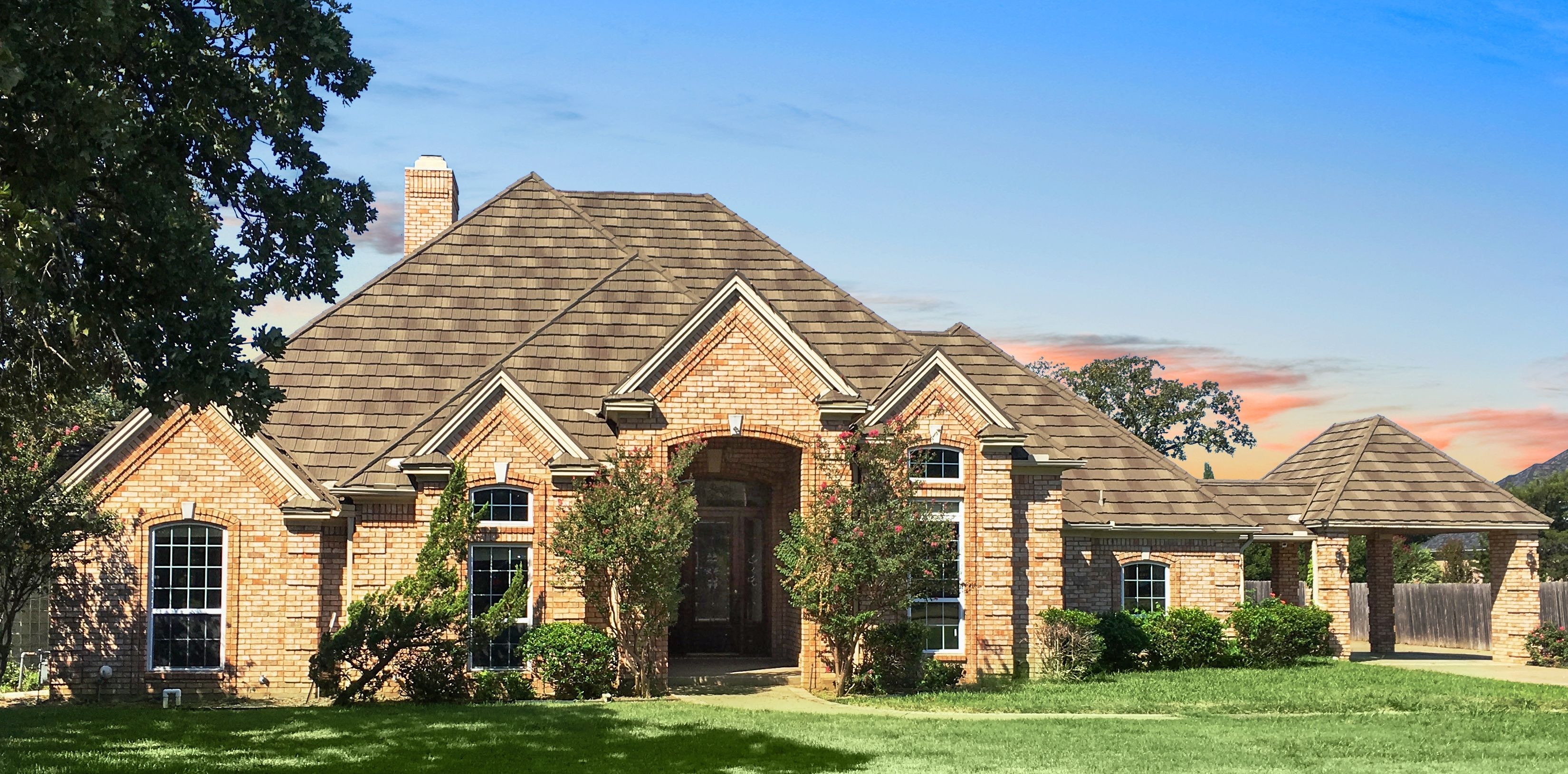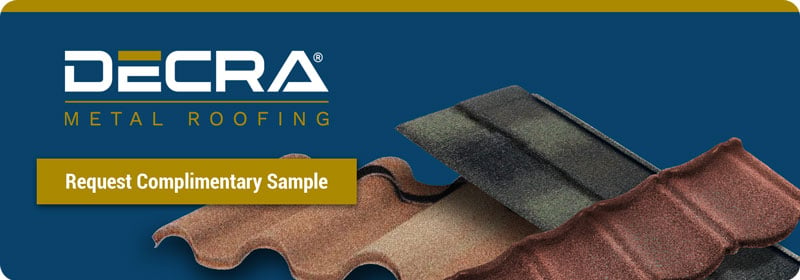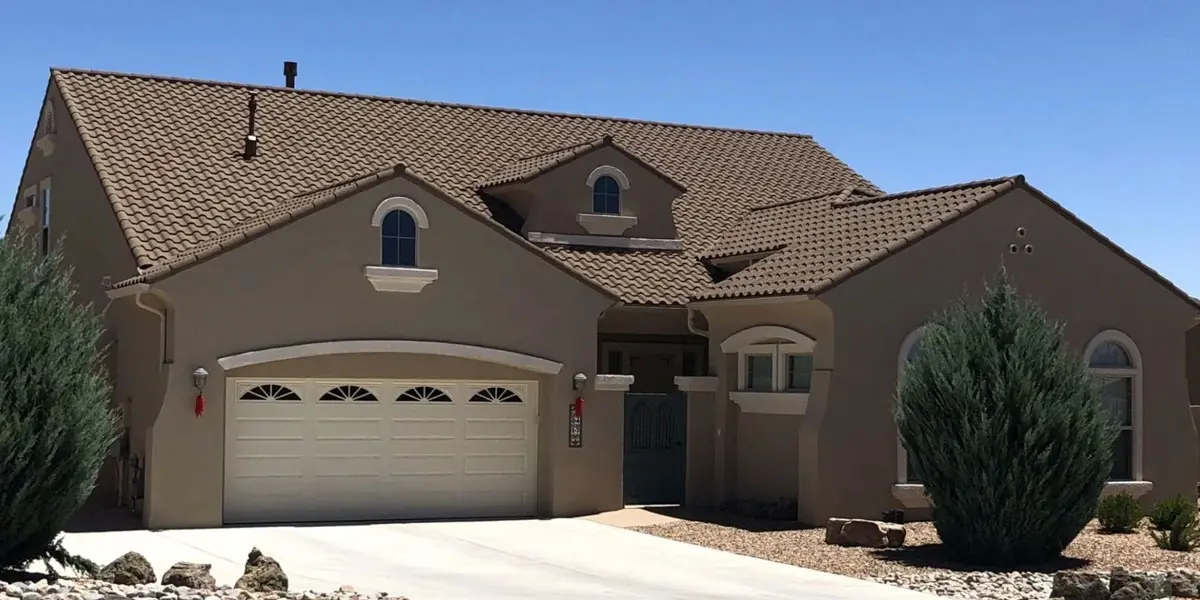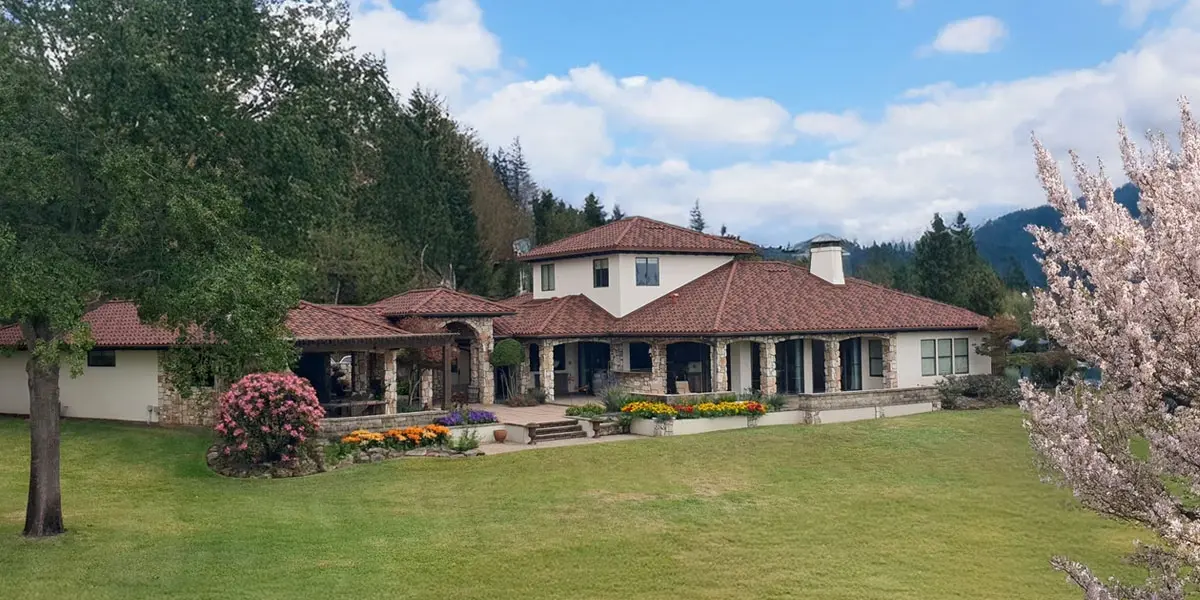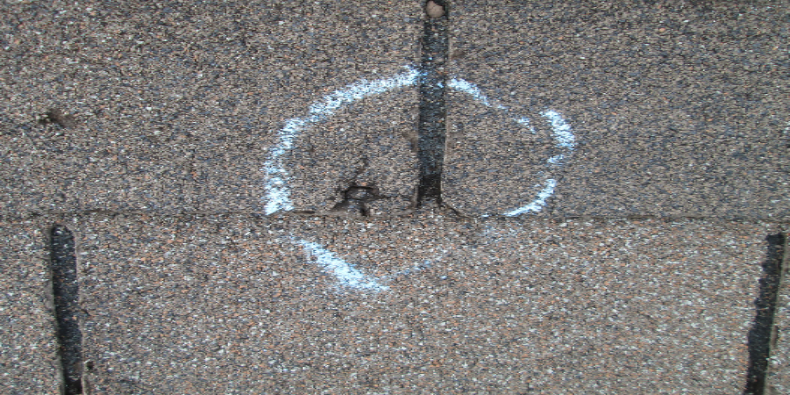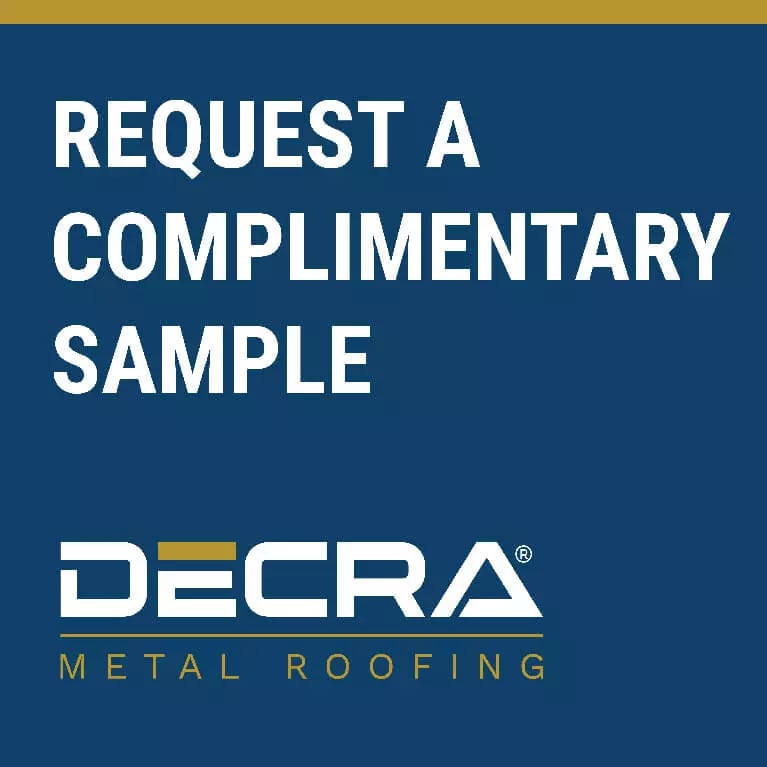Before the advent of stone-coated metal roofing, many homeowners ruled out metal roofing as a viable option due to its industrial appearance. However, this perception changed dramatically in 1957 when stone-coated metal roofing was introduced.
Stone-coated metal roofing combines the strength of steel with the aesthetic appeal of traditional residential roofing materials–like asphalt shingles, clay tiles, and wood shakes–to provide homeowners with everything they’re looking for in a roof: durability, longevity, and stunning curb appeal.
Today, metal roofing is the second most popular roofing material in the U.S., and demand for stone-coated metal roofing has surged by 33% over the past decade as homeowners become increasingly aware of its many benefits.
Keep reading to learn more about the unique benefits of stone-coated metal roofing and why it could be the perfect solution for your home.
- How does stone-coated metal roofing differ from metal roofing?
- Does stone-coated metal roofing provide the same benefits as metal roofing?
- What does stone-coated metal roofing look like?
- Stone-coated metal roofing resources for homeowners.
How Does Stone-Coated Metal Roofing Differ from Metal Roofing?
Metal roofing is known for its exceptional durability, longevity, and energy efficiency. The most common types of metal roofs are made of aluminum, copper, and steel.
The strength of metal roofing lies in its inherent properties and ability to withstand nearly anything Mother Nature has to offer, including hurricane-force winds, tornadoes, hail, and fire.
In addition to its industrial-strength durability, metal roofing provides additional benefits, including:
- Longevity: Metal roofs last two to three times longer than traditional roofing materials, like asphalt shingles.
- Energy Efficiency: Metal roofs are one of the most energy-efficient roofing materials and can reduce cooling costs by as much as 40%.
- Low Maintenance: Metal roofs are low-maintenance and require minimal upkeep.
- Environmentally Friendly: Metal roofs are made from sustainable materials and are 100% recyclable at the end of their lifespan.
- ROI: Metal roofs offer an extremely high ROI and can increase home values by as much as 6%.
Stone-Coated Steel: The Evolution of Metal Roofing
While traditional metal roofing excels in performance, it has often been overlooked for residential applications due to its utilitarian appearance. Stone-coated metal roofing addresses this concern by combining the strength of steel with the aesthetic appeal of residential roofing materials.
The stone-coating manufacturing process starts with a base of high-quality galvanized steel sheets. The steel sheets are stamped into the shape and style of traditional residential roofing materials like asphalt shingles, clay tiles, and wood shakes. Next, a layer of natural stone granules is adhered to the steel.

The result is a roofing material that offers the best of both worlds: the strength and durability of metal roofing with the beauty and charm of traditional roofing materials.
Does stone-coated metal roofing provide the same benefits as metal roofing?
Yes, and more! Stone-coated metal roofing not only offers all the benefits of traditional metal roofing, but also several key enhancements, making it a more appealing choice for many homeowners.
All types of metal roofing, including stone-coated metal roofing, offer exceptional performance in key areas:
- Longevity: Stone-coated steel and other metal roofing options (like aluminum or copper) are renowned for their exceptional lifespan and resilience, often lasting 50 years or more with proper installation and maintenance.
- Durability: The inherent strength of metal makes all types of metal roofing highly resistant to the elements, including hurricane-force winds, tornadoes, severe storms, hail, fire, pests, and rot.
- Energy Efficiency: Metal's reflective properties make it one of the most energy-efficient roofing materials on the market. The highly reflective surface minimizes heat absorption, keeping your attic cooler and reducing the workload on your air conditioning system.
The Stone-Coated Metal Roofing Advantage:
Stone-coated steel roofing elevates these shared benefits and offers additional advantages, including:
- Enhanced Aesthetics: One of the key advantages of stone-coated metal roofing is its enhanced aesthetics. The stone granules used in the manufacturing process give stone-coated metal roofing the design versatility to suit any style home. With a wide range of colors and styles, stone-coated metal roofing offers a more traditional look, appealing to homeowners who want the benefits of metal without the industrial aesthetic.
- Added Protection: The stone granules on stone-coated steel act as a protective barrier, shielding the underlying steel from harsh UV radiation, hail, debris, and other environmental factors. This extra layer of defense enhances the roof's durability and longevity, reducing the risk of denting, fading, and corrosion.
- Sound Dampening: The stone granules absorb sound more effectively than other types of metal roofing, especially during rain or hail.
What does stone-coated metal roofing look like?
Stone-coated metal roofing offers the strength of steel in a diverse palette of styles, colors, and textures and is well-suited for residential roofing projects.

Stone-Coated Metal Tile Roofing
Stone-coated metal tile roofing provides the timeless beauty of clay tiles–including the robust form of barrel-style Spanish tile and the distinctive S-shape of Classic Mediterranean scalloped tile–backed by the strength and durability of high-grade steel.
Take DECRA Villa Tile, for example. Its semi-cylindrical barrel shape captures the elegance of Old-World Spanish and Roman barrel styles, perfectly complementing Italian villas, Spanish Colonial, and Mission Revival homes.
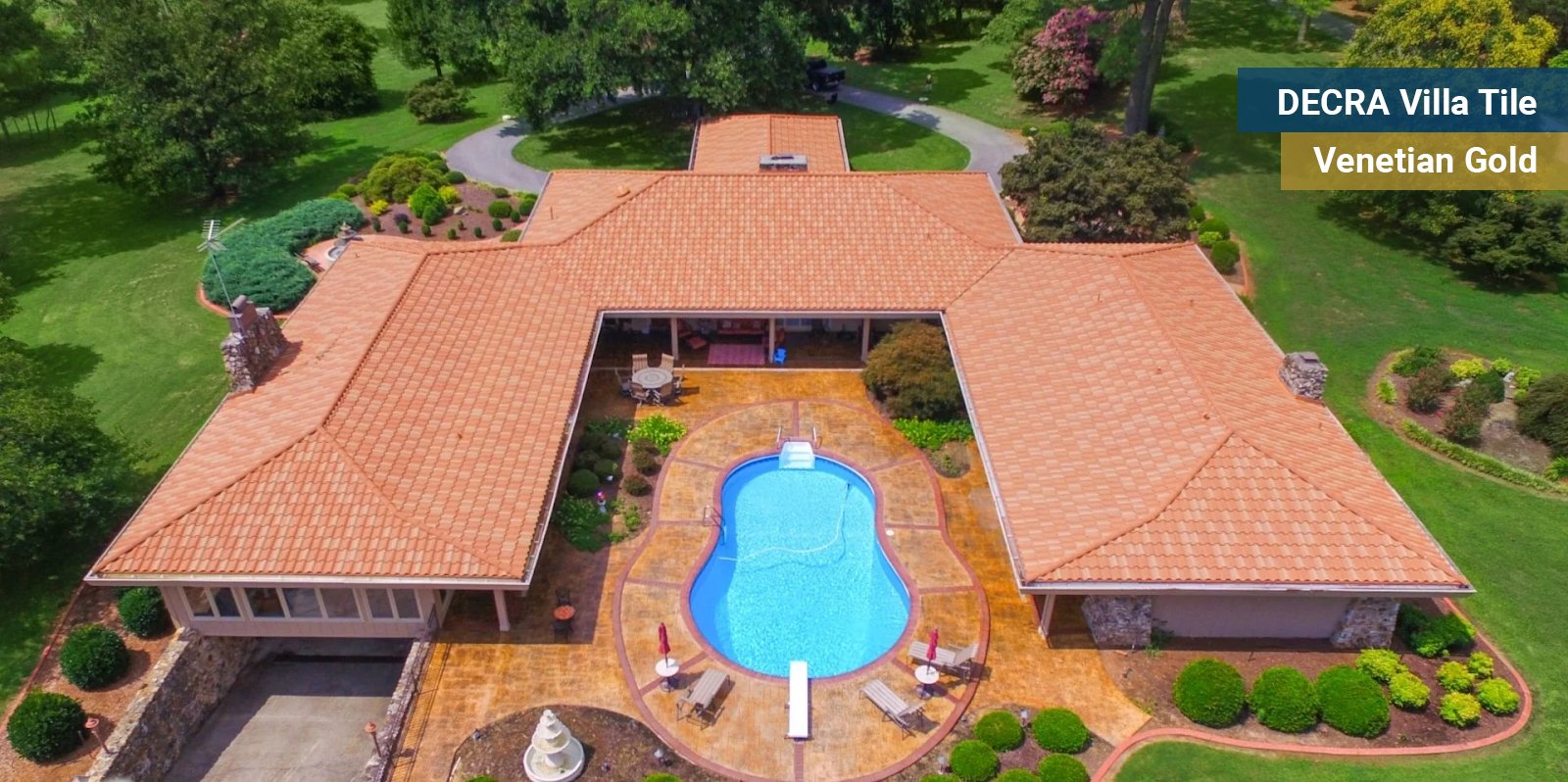
Alternatively, the distinctive wavy S-shape of DECRA Tile replicates the alluring ripple of scalloped clay tiles often found in Mediterranean designs.

Stone-Coated Metal Shingle Roofing
For architectural styles that rely on the thick-cut edges and dimensionality of asphalt shingles, stone-coated metal shingle roofing provides the same aesthetics while lasting two to three times longer and providing superior energy efficiency. DECRA Shingle XD, for instance, provides the same look and distinctive shadow lines as asphalt shingles.
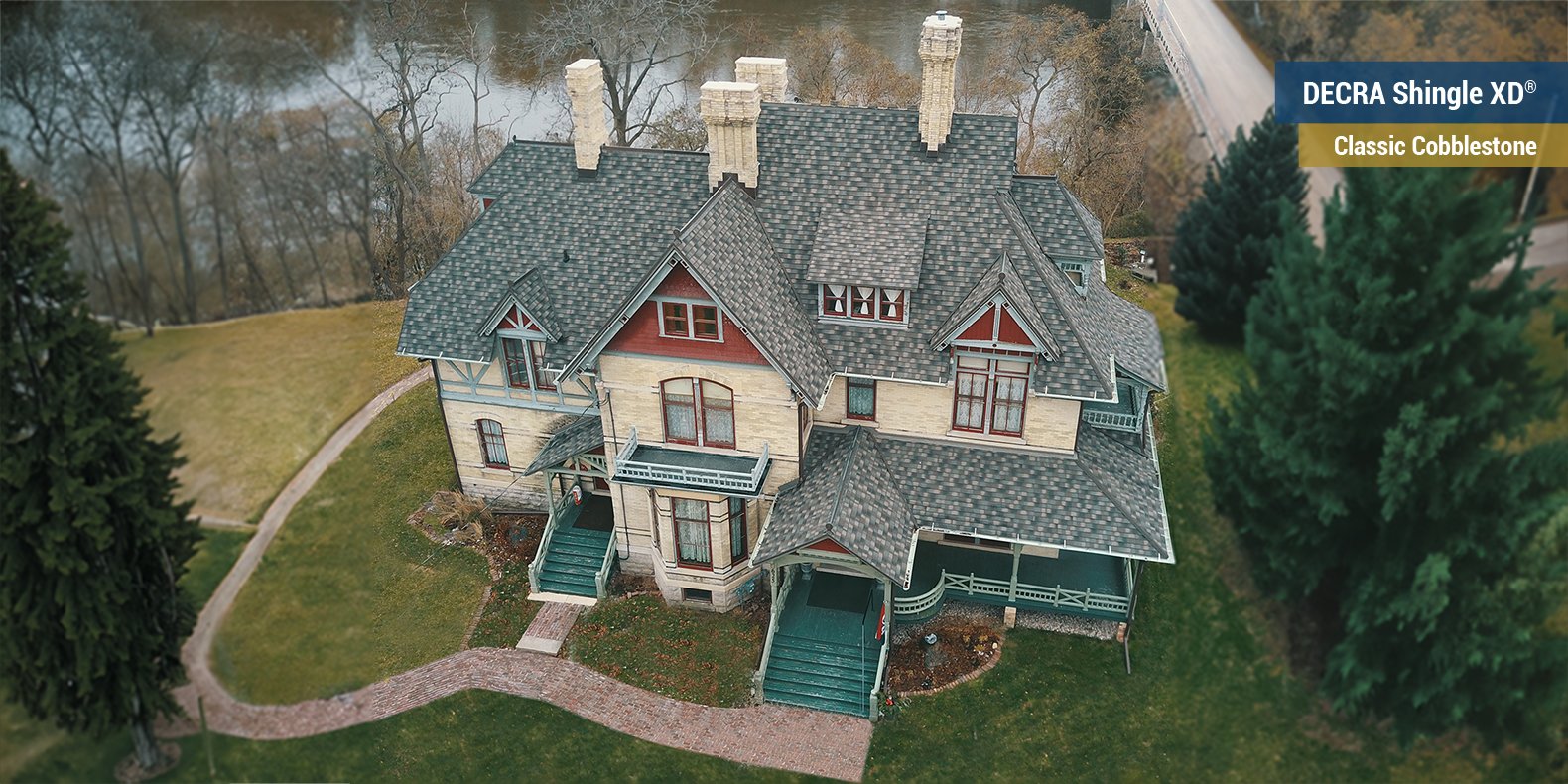
Stone-Coated Metal Shake Roofing
While wood shakes and shingles undoubtedly provide rustic beauty, they also have performance issues–such as poor fire resistance–and are prone to rotting, fading, and insect infestations.
With stone-coated metal shake roofing, homeowners can achieve the distinct look of wood without frequent maintenance. For example, DECRA Shake XD and DECRA Shake provide the same rustic charm and architectural detail of natural wood shakes and shingles.


Stone-Coated Metal Roofing Resources for Homeowners
If you’re looking for a roof that provides both strength and style, you’re looking for a stone-coated metal roof. Here are some additional resources to help you decide if stone-coated metal roofing is right for your home.
- What is stone-coated metal roofing?
- 10 things to know about metal roofing.
- How to find a reliable metal roofing contractor.
- Stone-coated metal roofing gallery.
- Home Visualizer: See how good a stone-coated metal roof will look on your home.
About DECRA Stone-Coated Metal Roofing
Whether you are looking for the style of traditional architectural shingles, classic clay tiles, or heavy wood shakes, DECRA’s line of stone-coated metal roofing products provides the style and performance your home deserves.
As the original manufacturer of stone-coated metal roofing products, DECRA has set the industry standard for durable roofing since 1957. Manufactured at our state-of-the-art facility in California, DECRA roofs are tested above and beyond the requirements to ensure the quality that DECRA is known for is present in every stone-coated metal roofing panel we produce.
Ready to see and feel the DECRA difference? Order a complimentary sample today.
Editor's Note: This blog was originally published in October 2021, but has been updated with relevant information.

